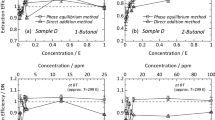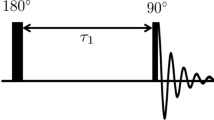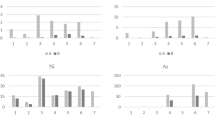Abstract
The specific activity of the moisture in the exhaust gas from a dryer was measured at various conditions. It approximately equalled that of the residual moisture left on the adsorbent during the previous regeneration. Modeling was used to demonstrate that this residual tritium can affect emissions and occupational dose during chronic or acute detritiation, and should be accounted for during ADS design and analysis.
Similar content being viewed by others
References
P. J. Allsop, J. A. Senohrabek, J. M. Miller, and E. F. Romaniszyn (1992). The effects of residual tritium on air-detritiation dryer performance.Fusion Technol. 21, 599–604.
S. K. Sood, D. T. Lee, and H. Brunnader (1992). Personal communication.
D. Basmadjian (1984). The adsorption drying of gases and liquids. InAdvances in drying (Vol. 3), A. S. Mujumdar, ed., (Hemisphere Publishing, NY).
F. Ono, S. Tanaka, T. Terai, M. Inoue, M. Nakazawa, Y. Takahashi, R. Kiyose, and M. Kanno (1983). Some basic studies on tritium processing in CTR solid blanket.Nucl. Technol. Fusion,4, 401–406.
Author information
Authors and Affiliations
Rights and permissions
About this article
Cite this article
Allsop, P.J. Residual tritium effects during spill clean-up. J Fusion Energ 12, 53–57 (1993). https://doi.org/10.1007/BF01059355
Issue Date:
DOI: https://doi.org/10.1007/BF01059355




